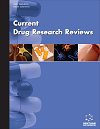
Full text loading...

Metabolic syndrome, a cluster of interconnected metabolic risk factors such as central obesity, insulin resistance, hypertension, and dyslipidemia, significantly increases the risk of type 2 diabetes mellitus (T2DM) and cardiovascular disease (CVD). Despite its rising prevalence and serious health consequences, metabolic syndrome remains underdiagnosed and undertreated. Sodium-glucose co-transporter-2 (SGLT-2) inhibitors, initially developed for T2DM management, have demonstrated promising therapeutic potential for addressing multiple components of metabolic syndrome. These drugs lower blood glucose levels by promoting glycosuria and exhibit additional benefits, including weight loss, reduced blood pressure, improved lipid profiles, and cardioprotective effects. The impact of SGLT-2 inhibitors on the five metabolic syndrome criteria listed by the National Cholesterol Education Program Adult Treatment Panel III (NCEP ATP III)—central obesity, triglycerides, HDL cholesterol, blood pressure, and fasting glucose levels-is evaluated in this narrative review, which combines results from meta-analyses and clinical trials. Reduced waist circumference, better lipid profiles, lower blood pressure, and improved glycaemic management are some of the main outcomes. Diuresis, natriuresis, enhanced insulin sensitivity, and AMP-activated protein kinase (AMPK) activation are the processes that underlie these effects. Although SGLT-2 inhibitors have a good safety record, they can cause uncommon diabetic ketoacidosis and urinary tract infections, which can be avoided with careful management. The study highlights that more research is necessary to understand long-term effects, optimize dosing regimens, and assess real-world applicability. According to these findings, SGLT-2 inhibitors are essential therapies for managing metabolic syndrome holistically, and they hold great promise for lowering the disease's worldwide burden and related health hazards.

Article metrics loading...

Full text loading...
References


Data & Media loading...